Everyone’s heard that there are no clocks or windows in casinos so that gamblers won’t realise how long they have been losing money. But is this actually design gospel? And does it work? According to research, it turns out that the most successful casino design may not be the dark, maze-like designs we think they are.
Image credit: Solar Casino Night (11) by Ian Murphy/flickr/CC BY 2.0
It’s no shock that a business built on getting many people to ignore the odds and spend lots of money would be invested in making sure that every thing in the casinos work towards that goal. And, it turns out, the conventional wisdom is not what works.
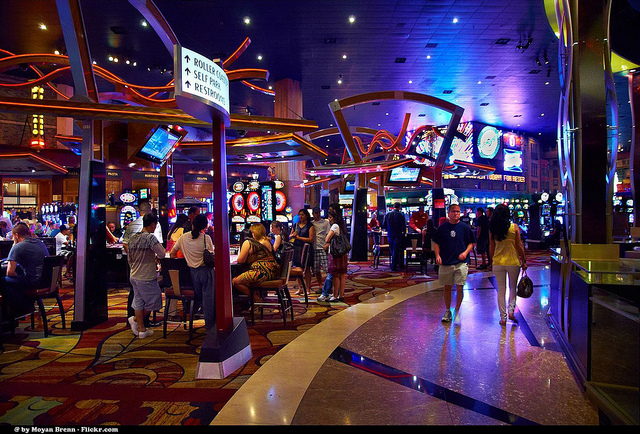
Image credit: Casino by Moyan Brenn / TravelBusy
Bill Friedman and the Gaming Design
The biggest proponent of casino design that we think of as being “classic” comes from former gambling addict Bill Friedman, who became a professor teaching about casino management at the University of Nevada Las Vegas, a casino executive and a casino consultant. In order to revamp the hotels that he had taken over, he studied over eighty Nevada casinos, trying to determine what they had that brought people to them. The games themselves are the same, so it had to be the package that was different. As he writes in Stripping Las Vegas: A Contextual Review of Casino Resort Architecture, “The only relevant consideration for casino design are these: What percentage of visitors gamble? What percentage return to gamble? Nothing else matters.”
Friedman’s conclusions became a 630-page book called Designing Casinos to Dominate the Competition. Friedman includes the analysis of the design elements common to successful casinos, tracking casino design throughout the whole history of legal gaming in Nevada, finishing in the 1990s. Friedman’s conclusions are based on his observations, evaluating successful elements as the ones in casinos making the most money and attracting gamblers from outside of their own guests. In his analysis, casinos were evaluated on total casino win, slot win, number of slot, slot occupancy rate and player count. He also evaluated slot-to-room ratio, figuring that having more slots than room in the hotel was evidence that gamblers were coming from competitors to their casinos. In a similar vein, he also looked at the ratio of players-to-room, more players than space in the hotel also measures this.
No aspect of design is left out of Friedman’s analysis, and his 13 principles line-up to certain stereotypes we have about casinos. As some examples:
- Principle 2: Gambling Equipment Immediately Inside Casino Entrances Beats Vacant Entrance Landings and Empty Lobbies
- Principle 4: The Maze Layout Beats Long, Wide, Straight Passageways and Aisles
- Principle 8: Low Ceilings Beat High Ceilings
- Principle 9: Gambling Equipment As the Décor Beats Impressive and Memorable Decorations
- Principle 11: Pathways Emphasising the Gambling Equipment Beat the Yellow Brick Road
If you’ve been to hotel where the casino was right there as you entered, the ceilings low, with little decor outside of the tables and machines and with a layout that somehow always led you back to the casino, then you’ve seen the “gaming design” in action.
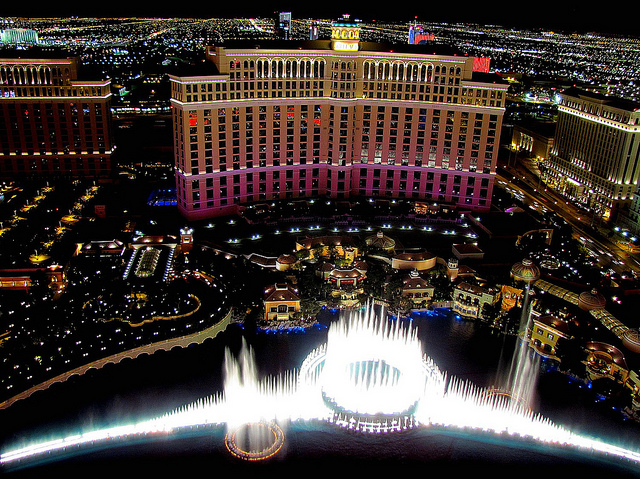
Image credit: A night view of the Bellagio and Las Vegas from above by O Palsson/flickr/CC BY 2.0
Roger Thomas and the Playground Design
In the last 30 years, casino design has undergone a shift away from the gaming design. After all, Friedman’s design principle #10 is “standard decor beats interior casino themes”. And for a while, that held: even though the exterior of the strip in Vegas showed hotels in a variety of themes, Friedman’s designs still held for the casinos inside.
Designer Roger Thomas partnered with Steve Wynn, and parted ways with Friedman’s design principles with the Bellagio. As explained to The New Yorker:
“If you think about it, the traditional layout makes no sense,” Thomas told me. “People don’t want to make bets when they feel trapped or overwhelmed or confused. That’s not the mood you want.” Instead, Wynn and Thomas worked on the assumption that people would be more likely to place big, risky bets when they felt safe and relaxed. Rather than catch gamblers in a spiderweb of slot machines, a situation that risked breeding anxiety, casinos should seduce them with a sense of magnificence. “People tend to take on the characteristics of a room,” Thomas said. “They feel glamorous in a glamorous space and rich in a rich space. And who doesn’t want to feel rich?”
Thomas set about creating a casino that contravened all the rules of casino design. Whereas Friedman criticised the “open barn” plan, which he defined as any space with an expansive layout and high ceilings, Thomas created soaring ceilings swathed in silk fabric and insisted on clear sight lines for easy navigation. Friedman called for “gambling equipment immediately inside casino entrances,” with the most popular slot machines by the front door. Thomas, however, imagined an elegant lobby, not filled with penny slots but displaying a massive Dale Chihuly glass sculpture suspended from the ceiling and huge arrangements of real flowers. Traditional casinos banished clocks and any glimpses of sunlight, to make gamblers lose track of the hours. Thomas installed antique timepieces and skylights that let in the desert sun. He even broke the rule prohibiting décor in the gaming areas. While Friedman insisted that the best furniture was the gambling equipment itself, Thomas selected European-style furnishings with scrupulous care.
The luxurious design, which violates many traditional principles, gets its “playground design” name from David Krane’s evaluation of casino spaces, and has taken over among the resorts with the money to implement it.
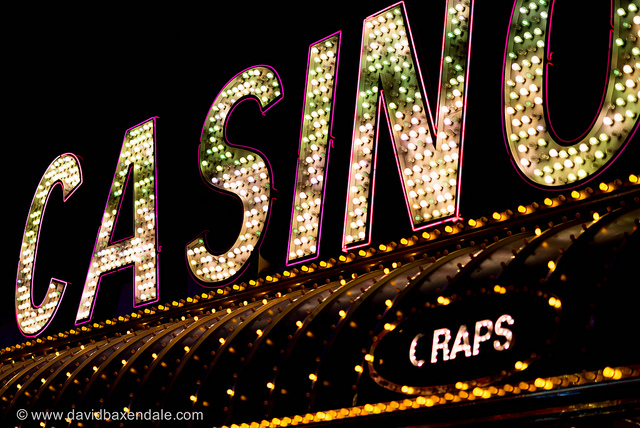
Image credit: Casino! by David Baxendale/flickr/CC BY-ND 2.0
What Does the Science Say
A team at the University of Guelph have conducted a number of studies on the psychological effects of the gaming design versus the playground design. In one study, examples of playground and gaming casinos were identified. Forty eight participants were recruited by the researchers as they left casinos in Las Vegas, and researches took small groups of the volunteers to four casinos in a row. After being given money to gamble in each casino, the participants were asked to rank the casinos they visited. In the end, they ranked the playground designs much higher on overall pleasure and “restoration” — defined as “a cognitive state where the effects of mental fatigue are offset and there is a respite from daily routine and distractions”. As gambling leads to mental exhaustion, a design that promotes restoration is likely to keep people gambling longer.
A similar experiment by the same team of Harvey H.C. Marmurek, Karen Finlay, Vinay Kanetkar and Jane Londerville introduced the variable of a soothing musical track. The average restoration ratings of the two designs only raised significantly for the playground designs. Participants said they would stay longer and gamble more in a playground casino design if music was present. Rack that up as another point for the playground casino.
The team’s 2009 study, Casino Décor Effects on Gambling Emotions and Intentions by Finlay, Marmurek, Kanetkar and Londerville, tested five other design elements for their effects on visitors to playground and gaming designs. The five variables were lighting, colour, crowding, symmetry in layout and spatial clustering. They used a sample of 484 gamblers (241 of them male). The playground and gaming designs were reproduced through video, with the five elements being manipulated within the videos. There were a total of 20 videos, with both playground and gaming having two variations on the design elements:
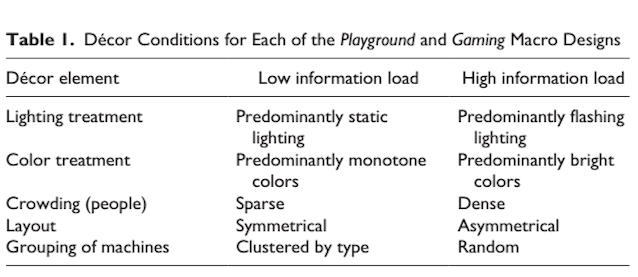
Small groups of participants were then shown one playground and one gaming video. Pleasure, restoration and at-risk gambling intentions were measured using surveys.
Playground casinos were always more likely to encourage gambling, no matter what small other design choice was made. On the other hand, bright colours and symmetry did effect the rankings of gaming casinos. The study was ultimately concerned with reducing risky gambling behaviours, and concluded:
The results reveal that casinos conforming to the gaming design are more susceptible to the micro décor elements tested than are casinos conforming to the playground design. In order to decrease at-risk gambling intentions without a decrease in restoration or pleasure, the gaming design should feature static lighting, a varied colour scheme, the clustering of machines by theme, or a symmetrical layout. The benign effects in a playground design may be induced by static lighting or a symmetrical layout. For both designs, females should be encouraged to gamble when the casino is heavily populated.
And, again, the playground design wins.
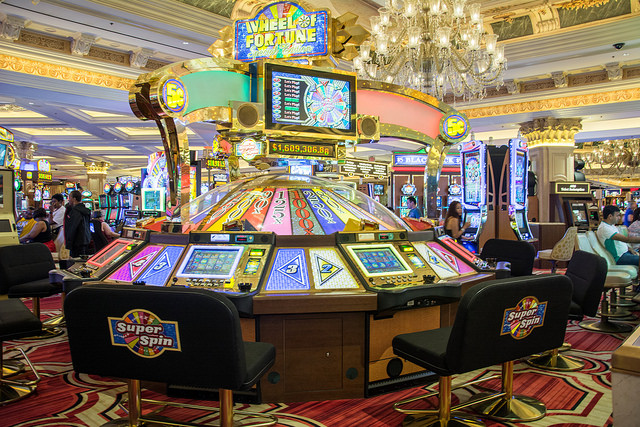
Image credit: y MsSaraKelly/flickr/CC BY 2.0
A Note About Scent and Slot Machines
Another element that can be used to get people to gamble more is scent. In a 2006 study, two smells that had been previously determined to be “pleasant” were released in different slot machine areas, with an unodoured area as a control. The first smell increased returns by around 45 per cent, whereas the control and the second smell had no appreciable difference from other weekends. The paper hypothesised that the smell could have caused people to slow down or stop in the area, making them more likely to gamble. As to why one worked and one didn’t:
One possible mechanism of action of the effective odorant, we believe, is the phenomena called olfactory-evoked recall, in which, as mentioned, memories are stimulated as are their accompanying nostalgic exaltation of mood. Of almost 1000 subjects queried recently, 86% said that an odor could induce in them a vivid memory of the past. It seems possible that Odorant No. 1 induced nostalgic recall and the associated emotions were affectively congruent with, and enhanced, the gambling mood.
The paper also compares the scent to the lights, sounds and other things in the casino. If that is true, it could fall into the same category as the small design elements manipulated in the other study.
No matter what, it seems that the herd following Steven Wynn’s design choices are making the right ones. From a profit motive, of course. Whether or not that’s a good thing is going to be up to your opinions on gambling or even on these houses using studies to make people spend more.
Additional reporting by Levi Gadye
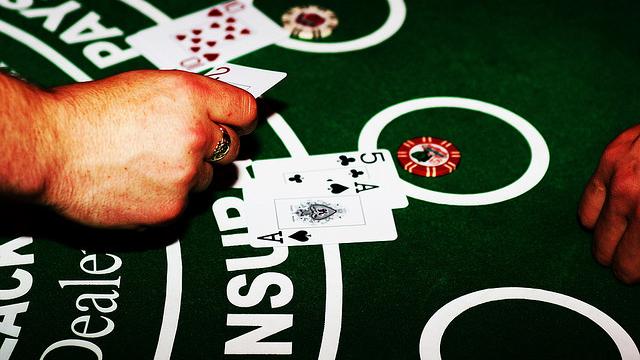
Comments
One response to “How Casinos Use Design Psychology To Get You To Gamble More”
a cynical assessment in the eyes of the punter.
bit like putting milk far from the entrance to the supermarket.